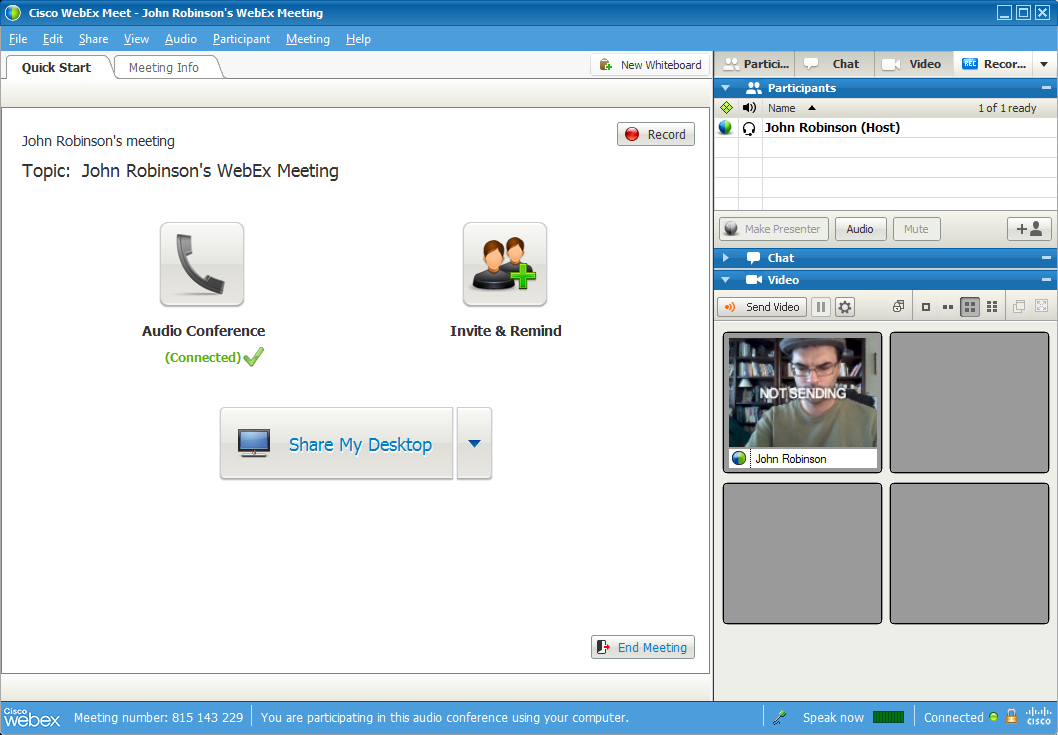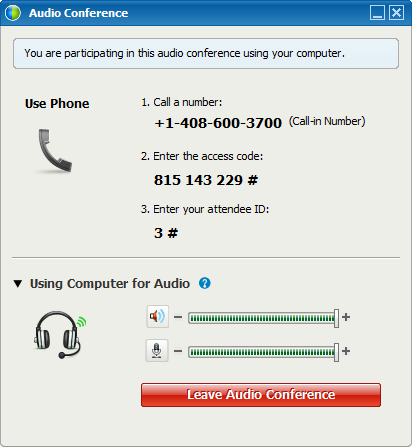From the Cisco WebEx site:
Engage
During your meeting:
- Share high-quality webcam video to bring out the best part of any meeting—the people!
- Show a document, application, or your entire desktop with one click.
- Let others share their desktops so everyone can contribute.
Holy smoke, Batman! That sounds like us!
Well, I got a little worried myself…until I tried it out.
Granted, Meet is still in beta. However, I can’t quite figure out what is up with Cisco and user interfaces and workflow. I am once again suspicious that they themselves must not use videoconferencing. They certainly have problems with HCI (human computer interaction). (See here for more about this.)
We tested the video quality. Turns out it’s not an issue. What is an issue is that you must spend time figuring out how to “send” video. You see, Meet defaults to an audio-only call, requiring you to turn on video. And then “send” it. Sadly, one of my test participants—a very tech savvy one—couldn’t make that work.
Then I discovered the video window is in a template that goes away when an app is shared. What? To continue to see video while working with a shared document, you have to “undock” the video from the template…after starting the share or the video window will go away again. Of course, this means starting the share, then bringing back the template, then undocking the video windows. Not surprisingly with that many steps, one (tech-savvy) participant wasn’t able to pull this off.
Speaking of shared apps and desktops: Could someone explain the need for starting the host in a template, then wiping away nearly the entire interface when sharing (except for recording and playback controls), only to force me to search for my participants’ video windows again? And why is none of it intuitive?
They also use an embedded share button, but it only appears when you go into “share” mode, which is a complicated matter. You can’t just instantly share an open window without going into this mode first.
Lastly, Meet is obviously still built in the WebEx “this-is-for-a-formal-meeting” mentality, despite claims to ad-hoc functionality. Why else is there still no presence displayed, and why must YOU MAKE A PARTICIPANT THE HOST TO GIVE THEM THE SAME FUNCTIONALITY YOU HAVE IN A MEETING???? Note: When you give “host” functionality to a participant, you lose it!
Good thing Cisco has their routers and were able to sell a whole heaping ton of telepresence stuff to people who like expensive things. Otherwise, this is still not a tool that fosters actual adoption by the rank-and-file end users at enterprises.
But hey, maybe you just want to give a presentation…
Oh, wait, you can do that with VSee, too. Hmm.
By the way, if we apparently weren’t using Meet in the most effective way, then the question is: Why couldn’t we figure it out in that time frame? If we couldn’t, how do you expect the average user to have the patience to do so?
Just asking.







If I were a CISCO product manager or developer I would love your analysis of their product.